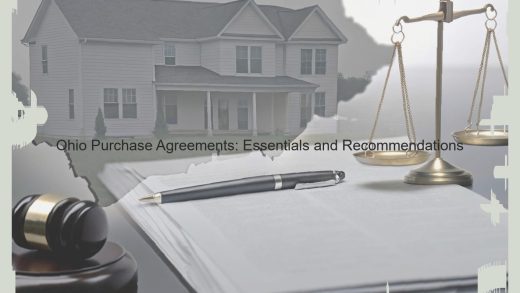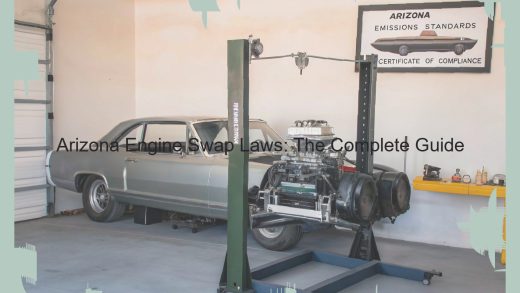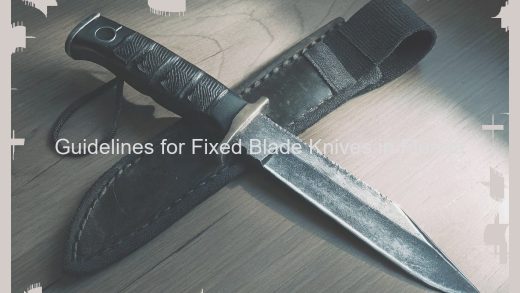What Constitutes a Non-CDL Driver?
Drivers that are not required to obtain a Commercial Driver’s License (CDL) to legally operate their vehicle in the state of Washington are considered non-CDL drivers. Non-CDL drivers differ from those that possess (or are required to obtain) a CDL in that they do not operate vehicles capable of carrying larger numbers of packages and, in most cases, they do not transport goods or property for businesses or other entities. For example, drivers who only operate small passenger vehicles, vans or SUVs are typically not required to obtain a CDL to operate their vehicle in the state of Washington. However, they are still required to obtain the regular class C driver’s license (and may be required to follow other licensing laws such as medical certification requirements if they are operating certain vehicles). In general , a valid driver’s license is required of all drivers in all the states (including Washington).
As with commercial drivers, there are other restrictions that non-commercial drivers must follow when it comes to operating heavy vehicles. For example, those that operate vehicles with a gross vehicle weight rating of 26,001 pounds or more are subject to other operating limitations (in addition to being licensed drivers). Non-CDL drivers may be able to drive some of heavy vehicles commonly driven by commercial truck drivers but only if the vehicle is used for different purposes (i.e. a recreational vehicle or tow truck).
The Fundamentals of the Non-CDL Driver
Becoming a non-CDL (commercial driver’s license) driver comes with certain requirements, which may vary slightly from state to state. For the most part, however, general eligibility criteria for non-CDL drivers are as follows:
-Age – Generally speaking, you must be at least 18 years old to begin working as a non-CDL driver. While in most states you must be at least 21 years old to drive across state lines while on the job, since you will not be legally allowed to cross state lines while just 18 years of age, companies are more lenient regarding the minimum age requirement and some permit drivers just across the state lines they are permitted while on the road with a supervisor.
-Residency – You must be a legal U.S. resident to work as a non-CDL driver. This means any drivers who have only a work visa or those who are in the country on a student visa are not able to legally work with a program or company that hires non-CDL drivers.
-Language Proficiency – As a general rule, you need to understand English in order to drive a commercial vehicle on public roads. This shouldn’t be a problem in most states, but if you are trying to work as a non-CDL driver in a state that requires you to speak Spanish or other languages, this could cause problems with your company.
State Requirements for Non-CDL Drivers
Each state has its own specific guidelines regarding non-CDL drivers. For example, in Utah, any vehicle with a gross weight rating (GVWR) of more than 10,001 lbs. but less than 26,001 lbs. is classified as a non-commercial vehicle. In Delaware, however, a non-CDL vehicle must have a GVWR of at least 26,001 lbs. to be considered non-commercial, and Maryland requires a non-commercial vehicle to have a GVWR of more than 26,000 lbs. Pennsylvania is an outlier, as the state does not classify these vehicles at all. Instead, all vehicles over 17,001 lbs. are considered commercial, regardless of the commercial license designation.
Other states take a different approach. Some, including Arkansas, Georgia, and Mississippi, do not designate particular hotshot vehicles as commercial or non-commercial, but rather leave it up to the discretion of individual companies. Alabama, meanwhile, does not distinguish between types of commercial drivers; transport vehicles are required to have the same insurance coverage requirements as other commercial vehicles with a GVWR of 26,001 lbs. or more.
Although some states allow motor carriers to opt their drivers out of Department of Transportation (DOT) testing requirements, most require some degree of driver training. Georgia invites private carriers to apply for a waiver from the federal requirements, but the state’s licensing agency has not yet granted such waivers. Oklahoma offers a similar exemption procedure but has yet to grant one as well. In Alabama, on the other hand, the state’s DOT assumes that all commercial drivers are "sufficiently trained in motor carrier operations." The state only requires larger companies to demonstrate compliance with existing federal regulations at the time of licensing.
Types of Vehicles Allowed for Non-CDL Drivers
These are the types of vehicles that can be handled by non-CDL drivers:
Private Bus. Most people who have been on a personal or chartered bus are within the non-CDL requirements. Some important restrictions to keep in mind are: no more than 15 passengers (including the driver), gross vehicle weight must be less than 26,000 pounds and the vehicle cannot be placarded to carry hazardous materials.
Commercial Truck and Van. Just as with the private bus, the driver must transport no more than 15 passengers (including the driver). The gross vehicle weight must be less than 26,000 pounds. If the vehicle is placarded to transport hazardous materials, you will need a CDL.
Emergency Vehicles. The non-CDL requirement allows a person to drive an emergency vehicle. Sometimes, these vehicles carry a large amount of equipment and weigh a huge amount. But, don’t get confused about the number of people transported. These vehicles are limited by the same factors as a private bus discussed above. In this case, this restriction means, fewer than 15 people, including the driver. The gross weight must be less than 26,000 pounds. The vehicle should not be placarded to carry hazardous materials.
Combination Vehicles. This is where the Non-CDL driver exemption becomes more complicated. This type of driver needs special training, which means they must take a state-approved training course. Again, there’s no more than 15 people permitted (including the driver) and the gross vehicle weight must be 26,000 or fewer pounds. In this case, the truck must also tow a trailer, for example. This trailer can’t weigh more than 10,000 pounds. As with the other categories, the combination vehicle must not be placarded to carry hazardous materials.
Safety and Insurance Requirements for Non-CDL Drivers
The insurance requirements for non-CDL drivers aren’t as straightforward for employers to determine than those for CDL holders. Where CDL holders need to furnish documentation of meeting financial responsibility coverages within 30 days of hire, non-CDL drivers have no statutory obligation to do so. In fact, this is rarely if ever communicated to the driver. But that doesn’t mean that the coverage isn’t vitally important.
Although there’s often a slim chance that drivers will actually cause harm to another driver or property, the potential for calamity – and the expenses that go along with it – don’t go away for non-CDL drivers. If a driver has driving responsibilities but does not possess a commercial driver’s license and is hired by an employer , the employer is still subject to the rules for financial responsibility requirements for non-CDL drivers. Failure to abide by these requirements can bring unwanted scrutiny from the federal government.
Sound Insurance Systems for Non-CDL Drivers
Employers are required to have insurance, for a minimum of $1,000,000 for bodily injury and $100,000 for property damage. This coverage must include liability for uninsured or underinsured motorist and may be satisfied through self-insurance if approved by the Federal Motor Carrier Safety Administration. The coverage should extend to all vehicles the employer owns or leases or that the employer (or his agent) owns but does not lease or borrow.
So if you hire a non-CDL driver or a driver who says they have a non-CDL license, you need to obtain a certificate or other proof of that driver’s financial responsibility for each state that your vehicle travels through. If you do not, you’re going to have some difficulty explaining why you’ve failed to comply with applicable federal laws.
Application Process for a Non-CDL Driver’s License
To apply for a non-CDL license, you will need to follow these steps:
Step 1: Provide the Necessary Documents
When applying, ensure you have the following documents:
Step 2: Submit Your Application
Submit your application to your state’s Department of Motor Vehicles (DMV), or other appropriate agency. Some states allow online applications, while others require in-person applications. If you apply in person, be sure to bring both your current driver’s license and the necessary documents.
Step 3: Pay Any Required Fees
Fees vary slightly by state, but most states charge a nominal fee for a non-CDL license.
Step 4: Take the Required Tests
In addition to your normal road test, some states require that you take additional tests for specialized non-CDL licenses, or licenses for certain vehicles. The exact details vary by state, but your DMV office should provide you with all the information you need to apply.
Step 5: Wait for Your License to Arrive
Once you’ve submitted all your documentation and taken the tests, it takes about 10 to 14 days for your non-CDL license to arrive. At that point, you will be authorized to drive a non-commercial vehicle legally. The above gives a general overview of how the process works, but make sure to check with your state’s DMV office for exact details.
Common Inquiries Regarding Non-CDL Requirements
What makes drivers non-CDL or exempt?
Drivers who operate a motor vehicle that does not cross state lines and are not required to maintain a DOT medical card are non-CDL or exempt. Common cargo for these drivers include aggregate, fuel, chemicals, and bulk construction supplies. Non-CDL drivers are also distributed and deliver local automotive parts, bakery goods, and soft drinks.
Do the same rules and regulations apply to both non-CDL and CDL drivers?
While most of the rules and regulations follow the same format, non-CDL drivers do not have the same hours of service constraints as commercial drivers. This means non-CDL drivers can drive as many hours as they’d like, as long as their duty period does not exceed 14 hours. In addition, non-CDL drivers are not required to file a daily log, which is usually evidence of hours worked. Instead , the FMCSA requires these drivers to submit a detailed list of the states they drove through on a regular basis.
Is there a medical examination requirement for non-CDL drivers?
Hopefully, this will be the last reminder that non-CDL drivers are exempt from the DOT medical examination. However, these drivers are not exempt from the pre-hire screening. This means, a driver must be examined by FMCSA-approved medical examiner before obtaining a certificate and being hired.
Are there drug and substance abuse regulations for non-CDL drivers?
Yes! Similar to other commercial drivers, non-CDL drivers are not exempt from the drug and alcohol testing requirements.
Do non-CDL drivers need to display their numbers in the same way?
No. Non-CDL drivers are not required to place their number anywhere on their vehicle.



